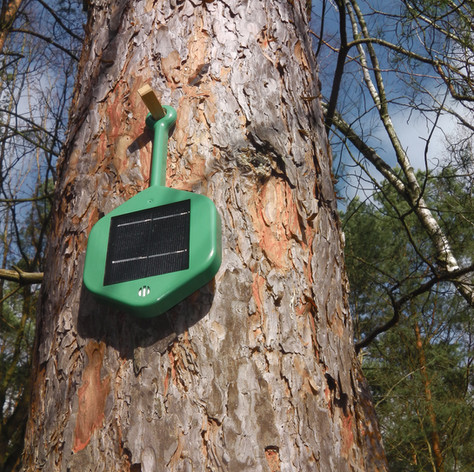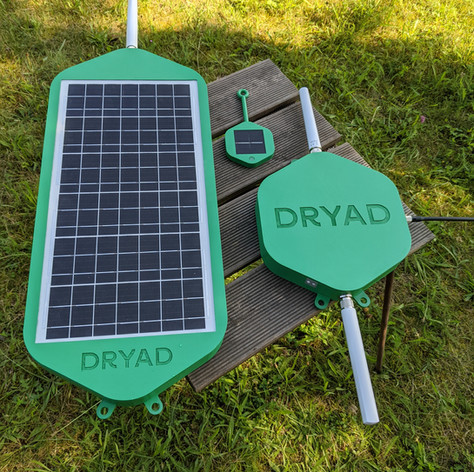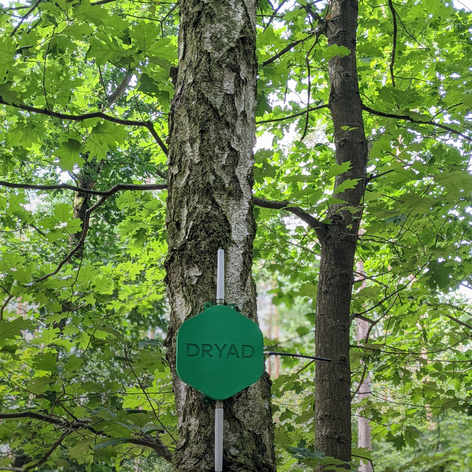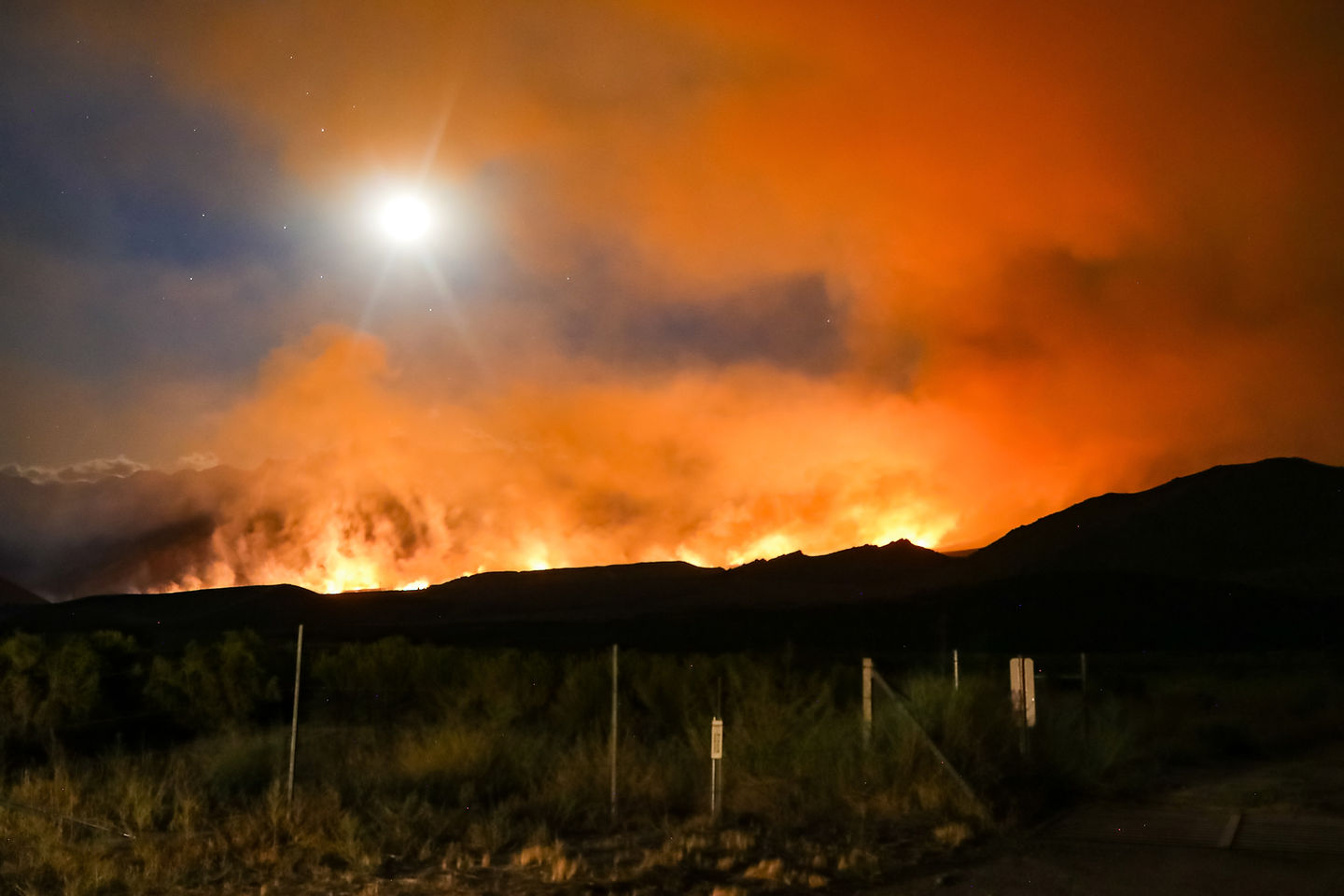Today, I stumbled across a German company called Dryad and its solar-powered ‘ultra-early’ wildfire detection sensor technology, which they are promoting as a “paradigm shift in approach to wildfire management”. It is currently being tested by the California Department of Forestry and Fire Protection (CAL FIRE).
US Federal department looks specifically at sensor technology for first time, marking paradigm shift in approach to wildfire management.

www.dryad.net
https://www.dryad.net/whitepaper-2023
Apr 4
CAL FIRE pilots Dryad Networks’ ‘ultra-early’ wildfire sensors ahead of next fire season
US Federal department looks specifically at sensor technology for first time, marking paradigm shift in approach to wildfire management
Dryad Networks is ramping up the manufacturing of its ‘detection within minutes’ wireless sensor, from 10,000 units sold in 2022 to 230,000 by the end of the year, to be ready to deploy at scale


 The California Department of Forestry and Fire Protection (CAL FIRE) is piloting German environmental start-up Dryad Networks’ ‘ultra-early’ wildfire detection technology to improve fire detection speeds, after severe wildfire seasons across the US saw, in 2022 alone, nearly 70,000 wildfires reported and 7.5 million acres burnt.
CAL FIRE, which is at the frontline of wildfire management in California, is trialling 400 of Dryad’s sensors in Jackson Demonstration State Forest. The pilot aims to show how sensor technology can support the Department by detecting wildfires much faster, subsequently reducing their destruction and the cost of firefighting resources needed to extinguish a blaze.
The California Department of Forestry and Fire Protection (CAL FIRE) is piloting German environmental start-up Dryad Networks’ ‘ultra-early’ wildfire detection technology to improve fire detection speeds, after severe wildfire seasons across the US saw, in 2022 alone, nearly 70,000 wildfires reported and 7.5 million acres burnt.
CAL FIRE, which is at the frontline of wildfire management in California, is trialling 400 of Dryad’s sensors in Jackson Demonstration State Forest. The pilot aims to show how sensor technology can support the Department by detecting wildfires much faster, subsequently reducing their destruction and the cost of firefighting resources needed to extinguish a blaze.
Wildfire detection methods have remained largely unchanged for decades, with most forested areas relying on human sightings, camera or satellite technology, which can only detect a fire when it’s visible above the canopy and already out of control. The adoption of new ‘ultra-early’ detection technology can reduce wildfire detection times from several hours to a matter of minutes, making it possible for firefighters to get to a fire when it is still easy to put out.
The pilot scheme comes at a pivotal moment in the approach to wildfire management in the US, with the United States Department of Agriculture specifically including sensor technology for the first time in its recently published Request for Information (RFI) for wildfire and land management. The RFI highlighted the challenges associated with keeping communities safe and more resilient to the impacts of climate change and demonstrates the urgent need to develop innovative new approaches to wildfire detection.
Not only can sensor technology detect wildfires much faster, but it can also provide their precise location and utilise trained ‘AI’ noses to distinguish between the different fuels that ignite them. With growing interest in its sensor and network technology, Dryad is ramping up the manufacturing of its wireless sensors, moving from 10,000 units sold in 2022 to producing up to 230,000 by the end of the year, to be ready to deploy sensors worldwide and at scale.
Dryad’s customers already include a number of municipalities, private forest owners and utility companies around the world. The company also has agreements with 30 resellers across Europe, the Americas and Asia, including working partnerships with Bosch, STIHL, and Vodafone Global, to bring the benefits of the technology to an even larger customer base.
Carsten Brinkschulte, CEO and Co-founder of Dryad Networks: “We’ve seen incredible commercial traction since developing our market-first sensor technology two years ago. On top of our pilot scheme with CAL FIRE, we’re also working with the City of Eberswalde, Germany, and currently have 25 taking place in America, Europe, Canada, and Asia.”
When it comes to wildfires, the message we’re getting over and over again is that timing is everything. The market is in desperate need of rapidly deployable, low-cost, low-power wireless sensors that can detect wildfires in minutes. To meet this need, we’re investing in scaling up the production of our sensors so that we’re ready to fulfil orders
Our goal by 2030 is to deploy 120 million sensors around the world, putting us on track to save approximately 3.9m hectares of forest and prevent 1.7bn tons of CO2 emissions. These are ambitious goals but not fantasy numbers – we believe that this scale is achievable and that we will be able to fulfil our mission to have a significant impact in the fight against climate change. Only with the wide-scale rollout of sensor technology can we really get a handle on wildfires.”
The immediate and devastating impact of wildfires is easily seen, but the true cost of wildfire is often hidden. These impacts are outlined in Dryad’s whitepaper, entitled “What lies beneath: the hidden truth about wildfire”, which is available for download
here.
Recent Posts
See All
 Dryad Networks Wins Innovation World Cup at Hannover Messe
Dryad Networks Wins Innovation World Cup at Hannover Messe
———————————————————————————————————
A forum search came up with both
@Sirod69 and
@Gman referring to this company last year, and a number of posters wondering about a possible connection between Brainchip and the “Bosch BME688 digital low power gas pressure temperature & humidity sensor with AI“, released in July 2022, which is an integral part of the Dryad device.
Others also mentioned the partnership of MegaChips and Bosch, and someone commented on Rob Telson’s “like” when the Bosch BME688 gas sensor was first released. Well, we know he likes plenty of posts by other companies that are not necessarily partners or customers of Brainchip, either because he is a genuinely friendly guy and/or because he wants other companies to notice Brainchip and hopefully strike a deal with them one day.
Given the meagre revenue in the last 4C and putting aside the argument that revenue might not come directly, but through MegaChips, let’s err on the side of caution and assume the AI in the original Bosch BME688 was not Akida.
But could there possibly be a future upgraded version with Akida inside?
Or what about that ultra-low-power air quality sensor? (Do I get this right that there are two different sensors involved? Or is it a single sensor with both an air quality and a gas sensing mode, the latter being triggered once a certain threshold has been reached? I know embarrassingly next to nothing about sensors, I’m afraid…

)
What I find intriguing is the following information taken from the Dryad website‘s FAQ section:
How do Silvanet’s sensors get power deep in the forest?
Our sensors have been extensively tested to ensure that their integrated solar panels can meet their energy needs, even in shaded forest locations. To maximize the energy efficiency of our Wildfire Sensors, we use a two-phase detection system which relies on ultra-low-power air quality sensing for the most part, triggering very accurate gas sensing when the air quality sensing mode suspects a fire. This way, Dryad combines the advantages of the air quality sensor (extremely low energy consumption) with the advantages of the gas sensor (minimizing alarms) while at the same time compensating for the disadvantages of both.
Is Dryad involved solely in wildfire detection?
While our initial focus at Dryad is wildfire detection, the Bosch BME688 sensors used in Silvanet sensor devices also collect environmental data such as temperature, humidity and air pressure which is periodically sent to the Silvanet Cloud, allowing forest owners to better understand the microclimate of the forest and its influence and development of the forest heath over time.
Further planned use-cases involve sensors that can detect chainsaw noise to help prevent illegal logging.
It’s not just about forests either, our technology can also be applied to other ecosystems including lakes, rivers and oceans. At Dryad, we have ambitious plans to connect the natural world and protect our planet.
Sensors that can detect chainsaw noise to help prevent illegal logging??? Great idea!
I only hope they are looking at the right company for their future planned use cases! Just a gentle reminder:
The good thing is, they seem to be open-minded regarding collaborations:
View attachment 37673
Then again, the following paragraph in their FAQ section makes it clear that there is no on-device learning involved, which as we know is a trademark of Akida. However, this may not actually be needed here, as explained.
How can these sensors detect the fire? How can they know it’s a real fire but not just a burning cigarette?
The built-in artificial intelligence (AI) of the sensors is continually trained for the specific ‘smell’ of the target forest on fire. Our customers collect samples from the forest floor and send them to Germany so that we can train our AI in the lab. Over time, we will collect more and more samples from typical forests in the different parts of the world and will eventually no longer have to train the AI for new deployments as there is only a finite amount of forest types. We expect this to be the case within the first two years of operation.
Doing so allows our Silvanet system to be continuously evolving and improving and greatly minimizes any risks of false positives within the platform.
———————————————————————————————————-
Six weeks ago, at Hannover Messe, Dryad won the EBV Innovation Hero 2023, a special prize awarded to groundbreaking European techpreneurs.
No matter whether or not Brainchip is involved, I wish this start-up the best of luck - I love companies that are trying to make the world a better place by developing solutions for real-world problems. This being an ASX stock forum, with TSE posters predominantly living in Australia, wildfires sadly are a very real threat to many of you. Hopefully this groundbreaking technology can help to fight them early on.
P.S.: The company’s name may also be a wordplay on the English word “dry” (> wildfire), but according to their mission statement it is actually an allusion to Greek mythology: “In Greek mythology, dryads are tree spirits living in symbiotic relationship with their hosts. Our artificial 'Dryads' monitor, analyze and protect forests using cutting-edge technology.”
How lovely!



 www.forbes.com
www.forbes.com

 www.forbes.com
www.forbes.com











